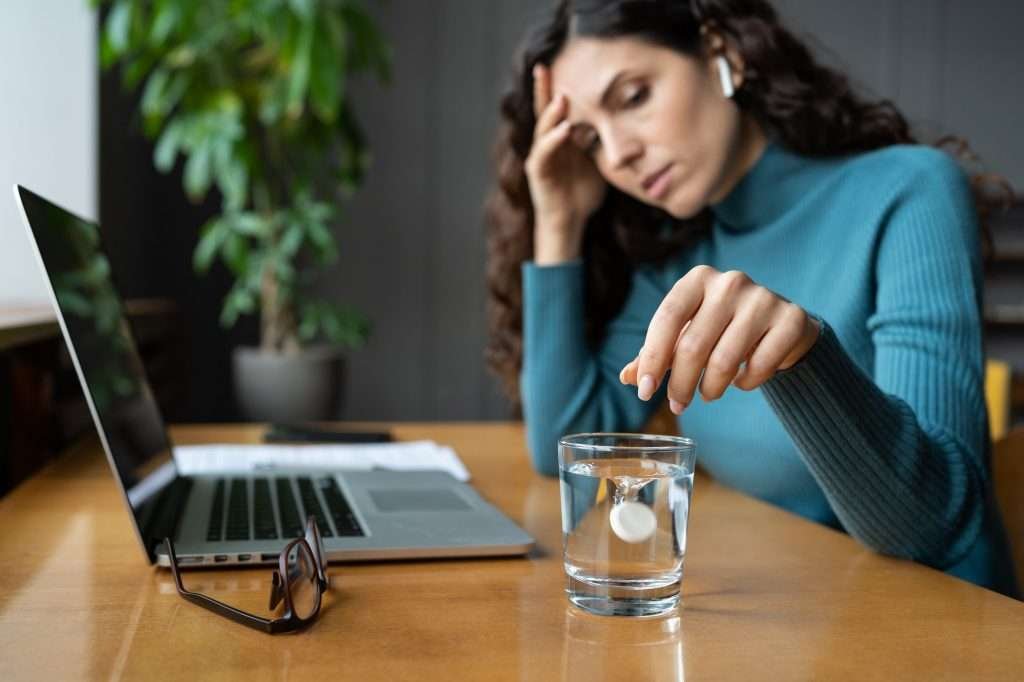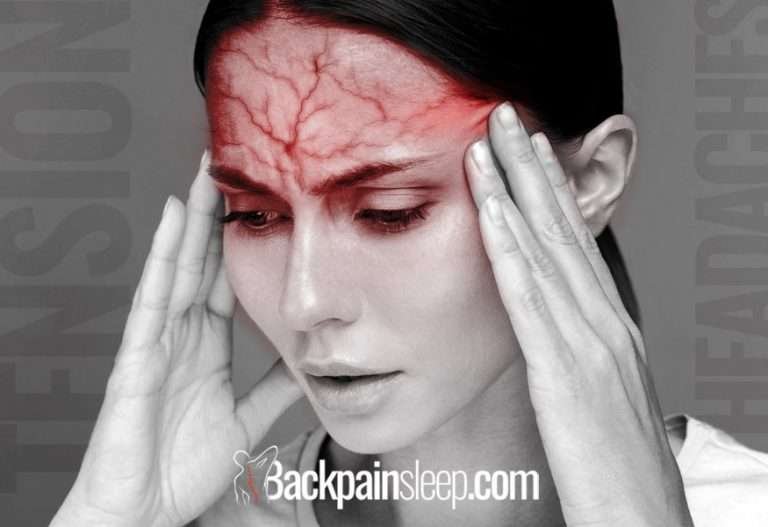Ibuprofen, aspirin, and acetaminophen are just a few of the over-the-counter meds that promise to relieve a thumping tension headache. Reaching for a pill again and again, on the other hand, can have the opposite effect on reducing head pain. This can lead to a condition known as “medication overuse headaches.” Taking too much medicine causes additional headaches.
There are ways to ease a throbbing tension headache, such as drinking more water or changing your sleep habits. This is especially common in those who take OTC drugs more than a few times per week for chronic headaches or migraines. Still, even the occasional minor tension headache might benefit from a more holistic approach.
Just keep in mind that if you’re having headaches once a week or more, or if specific red flags accompany them, you should always consult a doctor (more on that below). With that in mind, here are some home remedies for headache prevention and relief:



Take a look at your sleep routine.
Follow the SEEDS mnemonic to avoid headaches: sleep, eating, exercise, drinking, and stress reduction. Neglecting any of these can cause a headache.
Headaches can be caused by sleeping too much or too little. Keeping a more regular sleep schedule could also help with occasional headaches. This means not sleeping in on weekends or vacations (sorry!) and keeping to a regular bedtime and waking time.
Consume regular meals daily.
If you haven’t started eating breakfast yet, now is the time to do so. If you can’t eat three meals a day, at least eat small, healthy snacks throughout the day, such as almonds or raisins. Keeping your body fueled from dawn to dusk might also help you avoid headaches.
Go to the gym and work out.
Working out with a pounding head may not seem ideal, but consider this: Exercise releases endorphins, natural pain relievers, which can help.
The US Department of Health and Human Services recommends getting at least 150 minutes of moderate-intensity exercise every week. Walking, swimming, cycling, jogging, or your favorite heart-pumping gym class are all good options.
Maintain a healthy level of hydration.
Dehydration is a recognized migraine cause, so make sure you’re drinking enough water.
Start your day off right with a refreshing 16-ounce (roughly half a litre) glass of water. Most of us require at least eight glasses of water every day. That amount rises when heat, sweat, medicine, and humidity changes are considered.
Keeping a water jug on your bedside or setting out a glass of water before bed to fill in your kitchen in the morning will assist.
Keep a healthy level of stress in check.
A gradual muscle relaxation technique can aid in releasing tight muscles that contribute to your headache. Here’s how to go about it:

- Concentrate your thoughts on a single muscle group, such as the ones in your hand. As you inhale, squeeze as hard as you can for about 8 seconds, making a tight fist.
- Exhale quickly and open your hand to release tension. Feel the tension dissipate as the muscles relax.
- Repeat with different muscle groups all over your body, starting with your feet and working your way up to your face.

Mindfulness practices such as guided imagery might also help you focus on something other than the pain.
Make yourself a cup of coffee.
If you generally drink a couple of cups of coffee in the morning but didn’t this morning, that’s the most likely cause of your suffering.
There’s a lot of evidence that you should stick to a consistent amount if you take caffeine, since drastically lowering it might trigger a withdrawal headache. Because too much caffeine can cause headaches in some people, try to keep your caffeine intake to no more than 150 mg per day (about two 8-ounce cups of coffee).
Use an ice pack or a hot pack to relieve the pain.
It’s up to you which one you prefer. However, they can both help with migraines and headaches. Ice packs work because they numb the affected region. Hot packs are effective because they improve blood flow to the affected area. If you’re at home, try stepping into the shower and letting the warm water touch your head.
Massage is a MUST.
Some patients with tension headaches also have increased muscular tension; therefore, relaxing the trigger points can assist. Press the trapezius muscles in your shoulders with your significant other or a friend. If you’re having trouble with tense muscles, you can also try pressing on your temples or across your ear.
Locate a dark, quiet area.
Photosensitivity is one of the most common migraine symptoms. Light and noise can have a direct impact on your ability to concentrate. Keeping a safe distance from whatever aggravates your discomfort will help you get back to 100 percent sooner. If you can’t go away, close your eyes for a few moments and relax.
Take a break from the computer or television.
According to the American Optometric Association, headaches are one of the most prevalent computer vision syndrome symptoms, or digital eye strain. Simply scrolling up and down on a computer, mobile phone, or tablet might cause headaches.
To avoid discomfort, the American Osteopathic Association (AOA) suggests adhering to the following rule: Every 20 minutes, take a 20-second break to look at anything 20 feet away.
Think about taking a vitamin B2 supplement.
Migraines have been proven to be reduced by high dosages of vitamin B2. According to a study in the Journal of Clinical Pharmacy and Therapeutics, adults who took 400 mg of the vitamin (also known as riboflavin) every day had better results.
Quit smoking.
According to the Cleveland Clinic, quitting smoking or staying away from places with a lot of smoke can help people avoid pain in the first place. Cigarettes, cigars, and even secondhand smoke contain nicotine, which can cause headaches, particularly migraines and cluster headaches. Because the chemical causes blood vessels to constrict and blood flow to the brain to decrease, you’ll end up with a headache.
Maintain a journal to keep track of triggers.
A notebook can not only aid in the tracking of symptoms that indicate the start of a headache or migraine, but it can also disclose the foods and drinks that cause them. The exact causes differ from patient to patient, but aged cheeses, MSG-containing meals, and artificial sweeteners are the most prevalent. They are more likely to happen when you drink dark alcohol like red wine or whiskey than when you drink white wine or vodka.
When Should You See a Doctor If You Have Headaches?
Don’t try to get through regular headaches on your own. If you’re having headaches once a week or more, or if they’re interfering with your daily life, see a doctor. Healthcare experts can not only give medication, but they can also detect an underlying medical ailment. The following are major red flags:

- Headaches that come on suddenly (“thunderclap headaches”)
- Headaches that occur when participating in specific activities (e.g., weight-lifting, coughing, exertion)
- Headaches accompanied by a fever or a stiff neck
- Changes in cognition are linked to headaches.
- Headaches accompanied by numbness or weakness
- Headaches that begin after the age of 50

If you have any concerns regarding your health, be cautious and seek expert treatment. The American Migraine Foundation has information for talking to your doctor about headaches and determining the best course of action.




